In the world of business, growth is not synonymous with size. Growth is defined by quality, not quantity. This is a lesson that entrepreneurs must learn in their business pursuits, et many often realize too late that growth for growth’s sake is not growth at all.
It’s even harder for those in the agricultural sector to accept this when the industry itself is dominated by large-scale crop and cattle farms, making it seem like the “go big or go home” mentality is the only way to succeed. But Pinkie’s Farm, a small-scale single-origin dairy farm located in Lipa, Batangas, is proving otherwise.
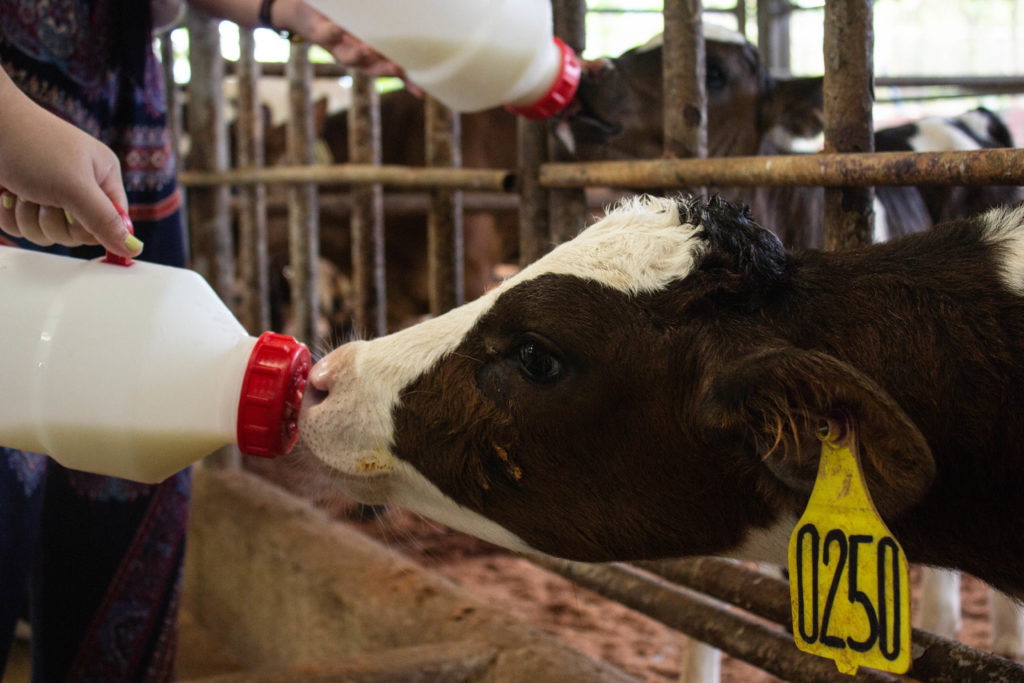
At Pinkie’s Farm, it’s value over volume
Established in 2009, Pinkie’s Farm started out with only three cows, but as their herd and milk production grew, the only answer to not letting the milk go to waste was to sell it. Luckily for Pinkie and Katrina Limcaoco, the mother-daughter duo behind the farm, there was already a demand for all-natural milk in the market.
Guided by consultants from the Dairy Training and Research Institute of the University of the Philippines Los Baños, Pinkie’s Farm produces only pasteurized milk, which is milk that has undergone heating to get rid of bad bacteria. Pasteurized milk is the midpoint of raw milk, which comes straight from the cow, and ultra-high temperature (UHT) processed milk, which is what’s commonly available in the market. It’s as close to organic as milk it can get while staying completely safe to consume.
While raw milk might be 100 percent organic, it contains all the good and bad bacteria of milk. And although UHT milk has a longer shelf life than both raw and pasteurized milk, UHT processing removes all the good and bad bacteria of milk. Pasteurization removes only the bad bacteria while retaining its fresh taste. Many farms don’t practice pasteurization, opting for UHT processing instead, seeing as the shelf life of pasteurized milk is a week at most; this makes UHT milk easier to sell. But from the start, Pinkie’s Farm never wanted to sell the most or be the biggest competitor in the market.
“Volume was never our first priority, quality and principles were. We really have no plans to be the biggest dairy brand—just the best,” says Katrina.
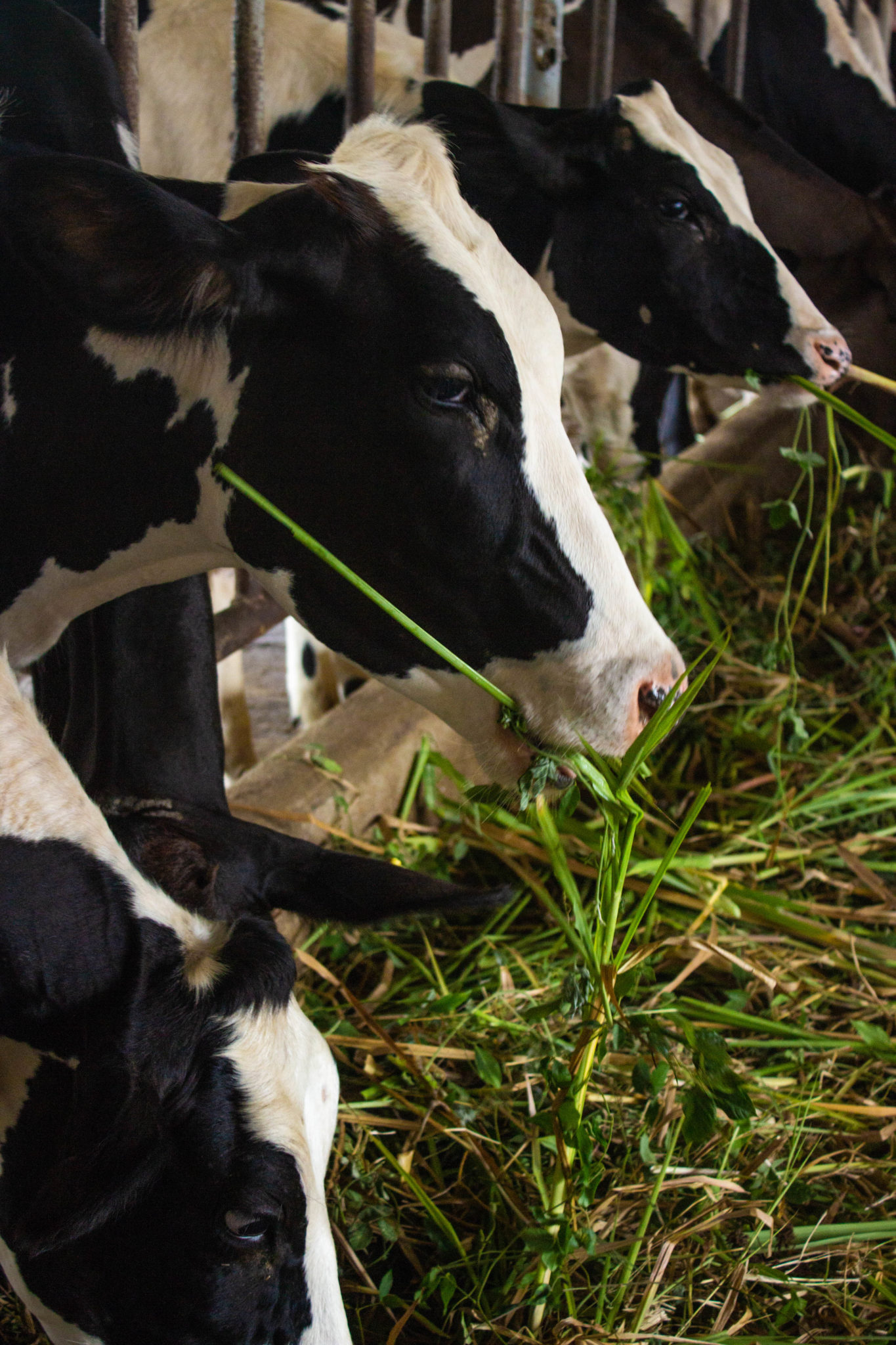
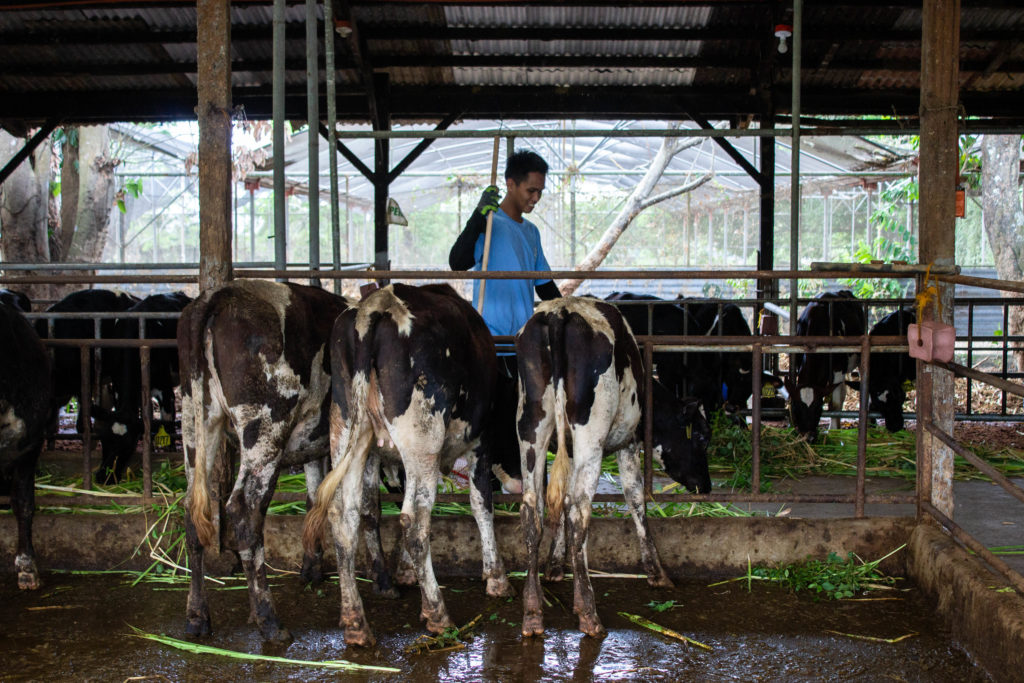
Caring for the herd
The farm aims to achieve this by keeping it as simple as possible. While they’ve adopted modern milking techniques and standards, the care and welfare of their herd remains a top priority. One way they do this is by being a single-origin dairy farm, meaning that all of their produce is sourced from their farm, unlike other farms which source milk from smaller farms or independent dairy farmers.
“We know what goes into our products from start to finish: from what our cows eat to what is put in our yogurts,” says Katrina. “We don’t buy milk from other farms just for more sales; we wouldn’t be able to have confidence in our milk this way.”
By remaining small-scale, Pinkie’s Farm avoids one of the biggest pitfalls of the dairy industry—animal abuse. The dairy industry is notorious for keeping cows in enclosed spaces all hours of the day, turning them into milking and breeding machines. This is not the case at Pinkie’s Farm. Every cow gets attention, and the farmhands know each cow’s individual personalities. Some cows of the herd even get names as elegant as Josephine. “It’s imperative for the people handling our cows to love animals,” says Katrina. And this works in their favor as it’s a scientifically proven fact that happy cows produce better tasting milk.
Pinkie’s Farm also doesn’t use any hormones or antibiotics to increase their herd’s milk production. This results in an average output that’s “about half of what a big commercial dairy [farm] produces.” The herd also feeds mainly by grazing in the farm’s pasture and by being fed the cut-and-carry way in which grass is cut beforehand for the cows to feed on. For those in the mass-produced dairy world, this might seem old-fashioned, but like what Katrina stated before, the goal is to produce the best, not the biggest dairy brand in the country.
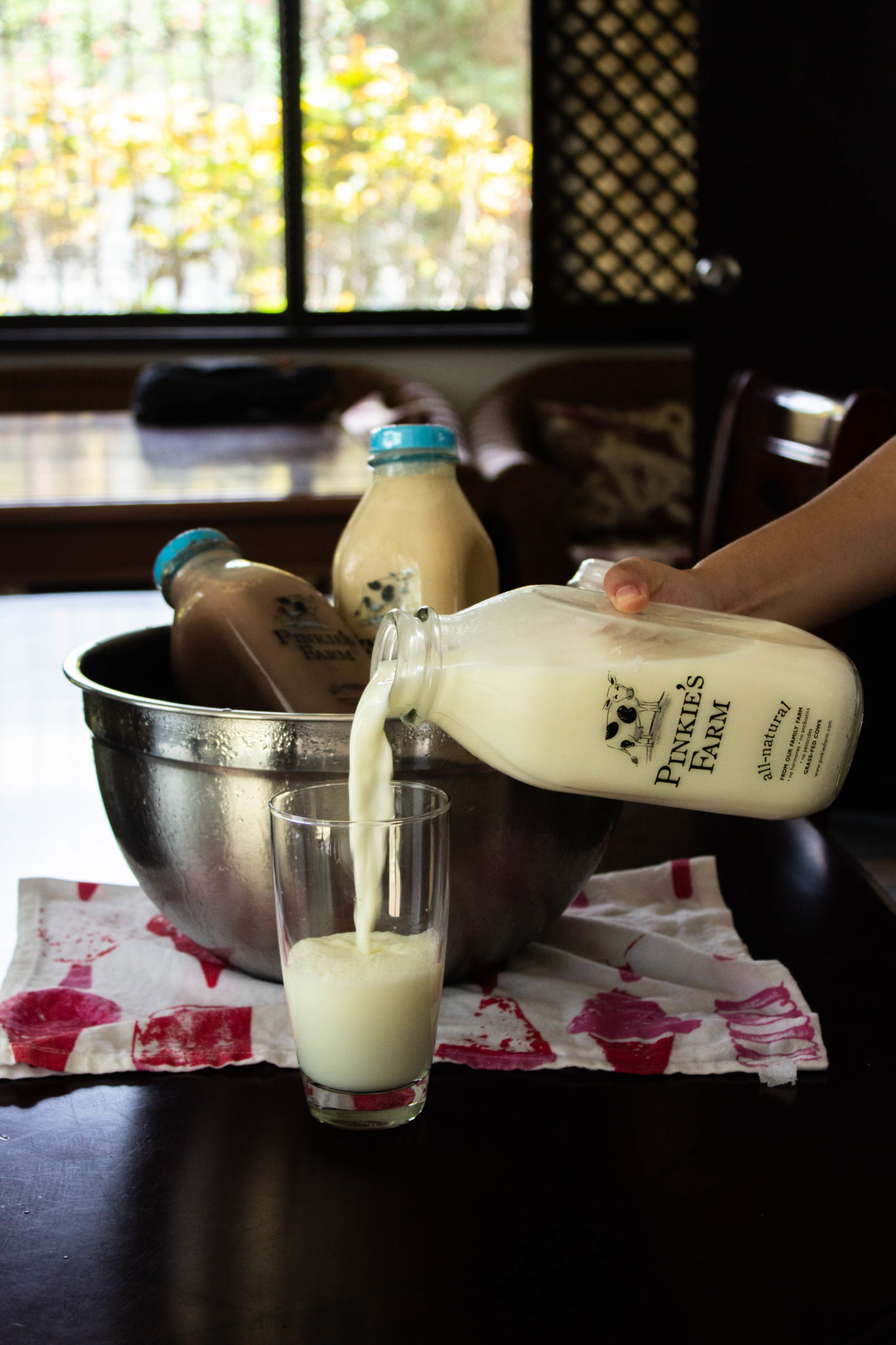
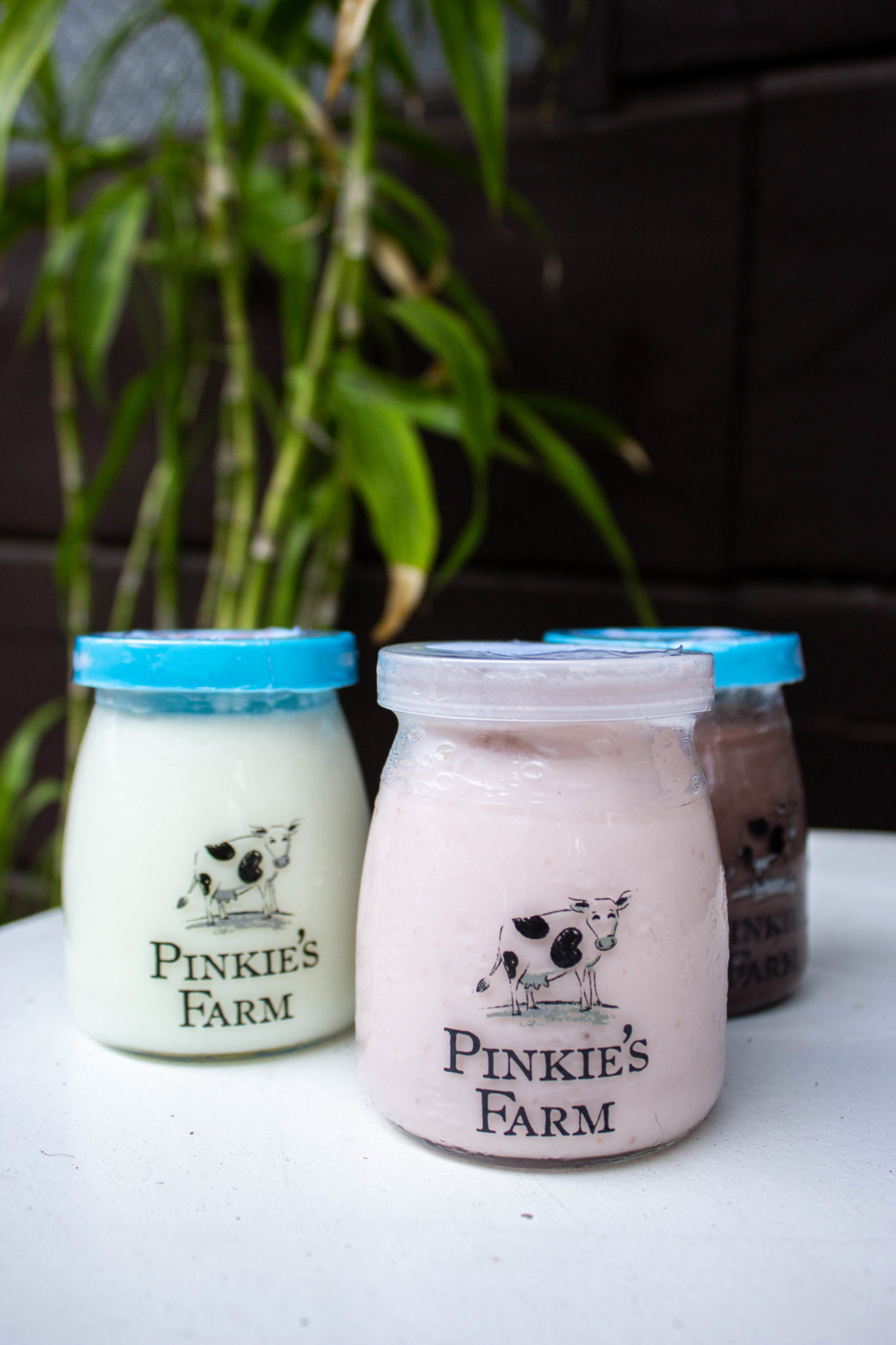
Dairy on the rise
And if the numbers are anything to go by, that seems to be the new trend. While the dairy industry saw a 1.53 percent increase in volume, the second highest in the agricultural sector, dairy also had the highest increase in value at 10.07 percent. This is based on data collected by the National Dairy Authority from January to March of this year.
According to the Philippine Statistics Authority, the uptrend in dairy is partly due to better farm gate prices offered by traders and processors. Prices are determined by demand, so it’s safe to assume the demand in quality local milk is on the rise. But while demand is on the rise, the farm will only grow to its maximum capacity. Overcrowding is a curse for many dairy farms, and that’s definitely not on their agenda.
“It starts with pride and interest in your product, and sticking to your principles. If your product is really superior, the market will recognize it and support it,” says Katrina Limcaoco.
For entrepreneurs interested in pursuing the dairy industry, Katrina has a few words of wisdom to share: “It starts with pride and interest in your product, and sticking to your principles. If your product is really superior, the market will recognize it and support it.”
Ten years after setting up shop, Pinkie’s Farm now has a solid, loyal customer base and a growing audience on social media. They sell milk in various flavors, even adding yogurt, butter, and kesong puti to their lineup. Seeing as their pasteurized products have a shelf life ranging from six days to three months, they also deliver their products straight to customers in sustainable glass containers, giving the entire brand an old-fashioned ’50s feel that you can’t get anywhere else.
Pinkie’s Farm is a lesson in the definition of growth, which is measured in quality, not quantity. The ultimate indicator of your business’ development is the level of customer satisfaction. Scaling too big, too fast is one way to lose sight of your vision, so while this competitive economy might pressure businesses to aim for size over value, take a page out of Pinkie’s Farm and remember that they “have no plans to be the biggest dairy [farm]—just the best.”






Interesting article, but you seem confused as to the meaning of organic. Organic is a production methode which rellies only on natural fertiliser (compost for example), and does not use artificial pesticides nor herbicides. Farms that sell using the term organic should be certified. Organic has nothing to do with if the milk is raw, pasturised or UHT.